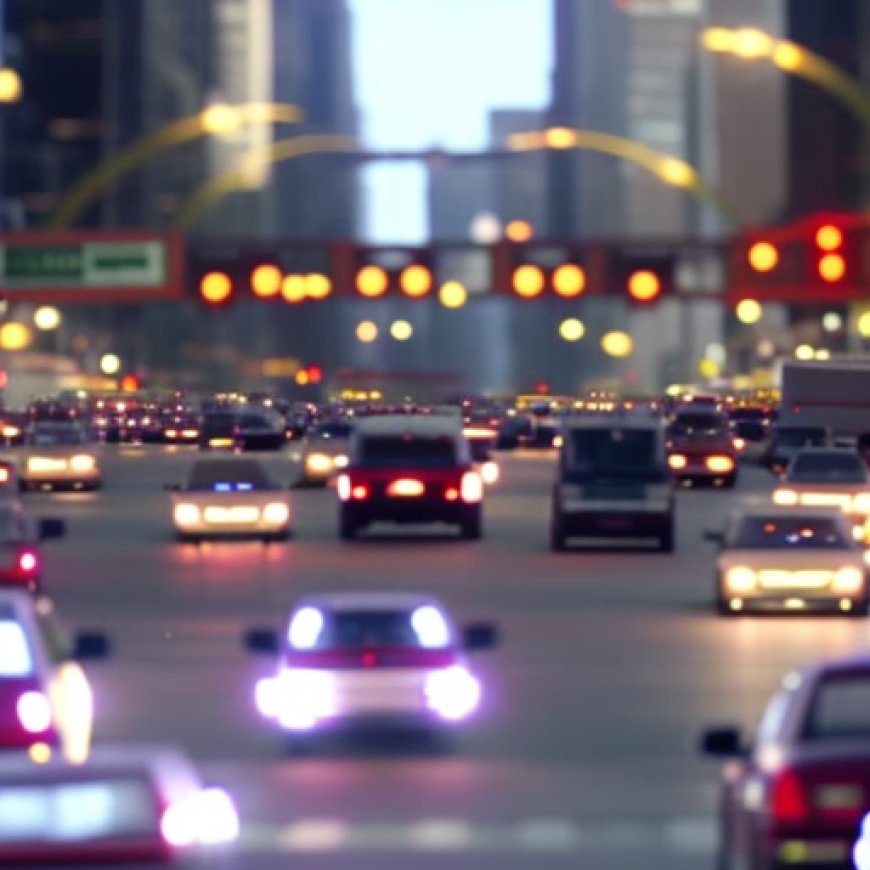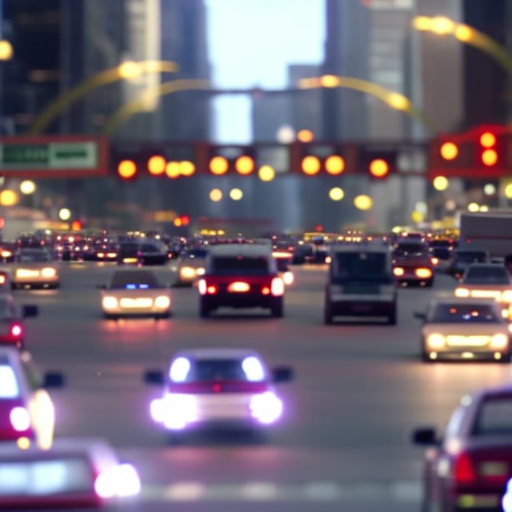New York City greenlights congestion pricing – here’s how this toll plan is expected to improve traffic, air quality and public transit
New York City greenlights congestion pricing – here's how this toll plan is expected to improve traffic, air quality and ... The Conversation Indonesia


New York City’s Congestion Pricing Plan to Reduce Traffic and Improve Public Transit
New York City is poised to launch the first congestion pricing plan to reduce traffic in a major U.S. metropolitan area. Like many journeys in the Big Apple, this one has been punctuated by delays. Once the system starts up, however, it’s expected to significantly reduce gridlock in Manhattan and generate billions of dollars to improve public transit citywide.
The Congestion Relief Zone
To enter the Congestion Relief Zone, which covers Manhattan south of 60th Street, vehicles will be charged different fees. Large trucks will pay $36, small trucks $24, passenger vehicles $15, motorcycles $7.50, ride-share vehicles $2.50, and taxis $1.25. Peak hours run from 5 a.m. to 9 p.m. on weekdays and 9 a.m. to 9 p.m. on weekends; overnight tolls are discounted by 75%.
Successful Implementation of Congestion Pricing
Evidence from cities around the world shows that charging motorists fees for driving into city centers during busy periods is a rarity in urban public policy: a measure that works and is cost-effective. Congestion pricing has succeeded in cities including London, Singapore and Stockholm, where it has eased traffic, sped up travel times, reduced pollution, and provided funds for public transportation and infrastructure investments.
As an urban policy scholar, I’m looking forward to seeing New York’s plan go into effect. There may well be surprises and adjustments as officials see how it works in practice. But given the heavy costs that traffic imposes on public health and productivity, I’m encouraged to see a major U.S. city finally test this approach.
Nudging drivers
Congestion pricing is a response to externalities – costs or benefits that are generated by one party but incurred by another. Clogged city streets and air pollution are externalities created by urban car users, many of whom live outside the city.
This concept has been around for some time. British economist Arthur Pigou discussed it as early as 1920 as part of his attempt to remedy the suboptimal workings of the market system. In Pigou’s view, taxing harmful activities would discourage people from engaging in them.
Other thinkers took up this idea. In 1963, Canadian economist William Vickrey, a future Nobel laureate, argued that roads were scarce resources that needed to be valued by imposing costs on users.
This approach is behind behavioral economics, the policy strategy of using “nudges” that preserve choice but encourage certain actions. Congestion pricing assumes that increased prices will make people heading into New York think more carefully about their travel patterns and about alternatives to driving.
Public transit receives priority
Congestion pricing in a city as big as New York is no small step. The New York plan was presented to the board of the Metropolitan Transit Authority in November 2023 after years of study and a detailed environmental impact assessment, required by federal law.
Project sponsors, which include several city agencies and the state transportation department, stated in the impact assessment that on an average weekday, an estimated 1.86 million people entered lower Manhattan by motor vehicle. Travel speeds in Manhattan’s central business district, below 60th Street, declined by 23% between 2010 and 2019, from 9.1 to 7.1 mph. The traffic was generating air and noise pollution, wasting travelers’ time, increasing business costs, and preventing emergency vehicles from responding quickly to accidents.
The agencies estimated that the proposed toll system would reduce traffic in the Congestion Relief Zone by 17%, with an associated decline in air pollution. It also would generate US$15 billion for capital improvements to the city’s public transit system, including making stations accessible for passengers with disabilities and buying new electric buses and commuter rail and subway cars.
More than 75% of all trips into the central business district are made by public transit. The system has been plagued by breakdowns over the past decade. The Metropolitan Transit Authority recently adopted a $52 billion capital improvement program to update its network, some parts of which are more than 100 years old.
Over several months of public hearings, the MTA heard both broad support for congestion pricing and thousands of requests for credits, discounts, and exemptions, most of which were denied. The limited number of exemptions includes private commuter buses, school buses, and city-owned vehicles, including emergency vehicles.
In addition, drivers who travel via Franklin D. Roosevelt Drive on Manhattan’s eastern edge, the West Side Highway on its western edge, or the Carey Tunnel between Brooklyn and Battery Park
SDGs, Targets, and Indicators
-
SDG 11: Sustainable Cities and Communities
- Target 11.2: By 2030, provide access to safe, affordable, accessible and sustainable transport systems for all.
- Indicator 11.2.1: Proportion of population that has convenient access to public transport, by sex, age and persons with disabilities.
- Indicator 11.2.2: Proportion of population that has convenient access to public transport, by sex, age and persons with disabilities.
-
SDG 13: Climate Action
- Target 13.1: Strengthen resilience and adaptive capacity to climate-related hazards and natural disasters in all countries.
- Indicator 13.1.1: Number of deaths, missing persons and directly affected persons attributed to disasters per 100,000 population.
- Indicator 13.1.2: Number of countries that adopt and implement national disaster risk reduction strategies in line with the Sendai Framework for Disaster Risk Reduction 2015-2030.
-
SDG 3: Good Health and Well-being
- Target 3.9: By 2030, substantially reduce the number of deaths and illnesses from hazardous chemicals and air, water and soil pollution and contamination.
- Indicator 3.9.1: Mortality rate attributed to household and ambient air pollution.
- Indicator 3.9.2: Mortality rate attributed to unsafe water, unsafe sanitation and lack of hygiene (exposure to unsafe Water, Sanitation and Hygiene for All (WASH) services).
-
SDG 9: Industry, Innovation and Infrastructure
- Target 9.1: Develop quality, reliable, sustainable and resilient infrastructure, including regional and transborder infrastructure, to support economic development and human well-being, with a focus on affordable and equitable access for all.
- Indicator 9.1.1: Proportion of the rural population who live within 2 km of an all-season road.
- Indicator 9.1.2: Passenger and freight volumes, by mode of transport.
Table: SDGs, Targets, and Indicators
| SDGs | Targets | Indicators |
|---|---|---|
| SDG 11: Sustainable Cities and Communities | Target 11.2: By 2030, provide access to safe, affordable, accessible and sustainable transport systems for all. | Indicator 11.2.1: Proportion of population that has convenient access to public transport, by sex, age and persons with disabilities. Indicator 11.2.2: Proportion of population that has convenient access to public transport, by sex, age and persons with disabilities. |
| SDG 13: Climate Action | Target 13.1: Strengthen resilience and adaptive capacity to climate-related hazards and natural disasters in all countries. | Indicator 13.1.1: Number of deaths, missing persons and directly affected persons attributed to disasters per 100,000 population. Indicator 13.1.2: Number of countries that adopt and implement national disaster risk reduction strategies in line with the Sendai Framework for Disaster Risk Reduction 2015-2030. |
| SDG 3: Good Health and Well-being | Target 3.9: By 2030, substantially reduce the number of deaths and illnesses from hazardous chemicals and air, water and soil pollution and contamination. | Indicator 3.9.1: Mortality rate attributed to household and ambient air pollution. Indicator 3.9.2: Mortality rate attributed to unsafe water, unsafe sanitation and lack of hygiene (exposure to unsafe Water, Sanitation and Hygiene for All (WASH) services). |
| SDG 9: Industry, Innovation and Infrastructure | Target 9.1: Develop quality, reliable, sustainable and resilient infrastructure, including regional and transborder infrastructure, to support economic development and human well-being, with a focus on affordable and equitable access for all. | Indicator 9.1.1: Proportion of the rural population who live within 2 km of an all-season road. Indicator 9.1.2: Passenger and freight volumes, by mode of transport. |
Analysis
-
Which SDGs are addressed or connected to the issues highlighted in the article?
The SDGs that are addressed or connected to the issues highlighted in the article are SDG 11: Sustainable Cities and Communities, SDG 13: Climate Action, SDG 3: Good Health and Well-being, and SDG 9: Industry, Innovation and Infrastructure.
-
What specific targets under those SDGs can be identified based on the article’s content?
Based on the article’s content, the specific targets under those SDGs are:
- Target 11.2: By 2030, provide access to safe, affordable, accessible and sustainable transport systems for all.
- Target 13.1: Strengthen resilience and adaptive capacity to climate-related hazards and natural disasters in all countries.
- Target 3.9: By 2030, substantially reduce the number of deaths and illnesses from hazardous chemicals and air, water and soil pollution and contamination.
- Target 9.1: Develop quality, reliable, sustainable and resilient infrastructure, including regional and transborder infrastructure, to support economic development and human well-being, with a focus on affordable and equitable access for all.
-
Are there any indicators mentioned or implied in the article that can be used to
Behold! This splendid article springs forth from the wellspring of knowledge, shaped by a wondrous proprietary AI technology that delved into a vast ocean of data, illuminating the path towards the Sustainable Development Goals. Remember that all rights are reserved by SDG Investors LLC, empowering us to champion progress together.
Source: theconversation.com

Join us, as fellow seekers of change, on a transformative journey at https://sdgtalks.ai/welcome, where you can become a member and actively contribute to shaping a brighter future.







